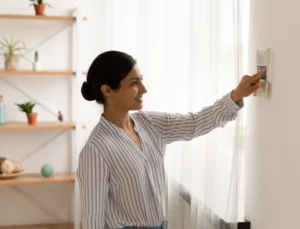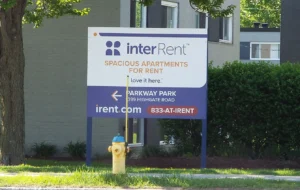What Is a Section 1031 Exchange, and How Does It Work?
 Whether you’re just dipping your toes into the real estate investment world or a seasoned investment property buyer, you’ve probably heard of a Section 1031 exchange. A Section 1031 exchange essentially allows investment buyers and sellers to defer capital gains taxes, if they meet certain requirements.
Whether you’re just dipping your toes into the real estate investment world or a seasoned investment property buyer, you’ve probably heard of a Section 1031 exchange. A Section 1031 exchange essentially allows investment buyers and sellers to defer capital gains taxes, if they meet certain requirements.
Named after the Internal Revenue Code (IRC) Section 1031, this type of exchange is a type of real estate purchase that can apply to “like kind” properties. Basically, properties that are similar investments.
If you’re interested in a 1031 exchange, there are quite a few moving parts that you should take into consideration — including potential tax implications and specific time frames.
Want to dive into this exciting type of real estate investment? Read on and discover more about 1031 exchange rules, benefits and how AAOA can help.
What is a section 1031 exchange?
A Section 1031 exchange (also known as a 1031 exchange, a like-kind exchange or a Starker) is a type of real estate purchase that enables property buyers to swap one investment property for another similar investment. Basically, as a real estate investor, you would sell your investment property and use that money to buy another new property within the same range of fair market value and within a certain time frame.
For two properties to qualify, they must be like-kind, which means they’re similar assets. However, this doesn’t mean that you have to exchange a condo for another condo. You can exchange one type of property for another, as long as the replacement property is of equal or greater value. For example, you can exchange a house for a strip of land.
From the IRS’s perspective, you’ve changed the form of your investment, but you’re not immediately cashing out the proceeds of the relinquished property or benefitting from capital gains. If done properly, this type of exchange lets the investor defer capital gains taxes, which will either result in no tax or limited tax due once the exchange is completed.
The replacement property can then grow in value, while the capital gains tax continues to be deferred for the investors. Real estate investors can complete a 1031 exchange as many times as they like — there’s no limit. This means you can keep swapping out properties to increase profit while deferring tax payments until you finally sell instead of swap. The result? You’ll only have one tax payment at a long-term capital gains rate.
Important note: Due to the 2017 Tax Cuts and Jobs Act, a 1031 exchange cannot apply to personal property sales. It only qualifies for real property exchanges, such as land, business property or real estate investment property.
The process of a 1031 exchange for an investment property
When an investment property is sold for capital gain, the seller must typically pay a tax on the proceeds. However, if the investor chooses to use those gains to purchase a like-kind property and follows additional 1031 exchange rules, the IRC will allow a tax deferral. But what does that process look like?
Broken down simply, the process begins once you choose the property you want to sell and identify the like-kind property you’d like to purchase. Then you can find an exchange facilitator to assist the process and transaction.
Below are the 1031 exchange rules you must follow to qualify:
- The property being sold must be an investment property — it cannot be a personal or principal residence.
- The potential replacement property being purchased must be identified within 45 days of selling the relinquished property.
- Both properties must qualify as like-kind properties.
- The replacement property must be of equal or greater value than the relinquished property.
- The investor must use the proceeds, or exchange funds, from the relinquished property’s sale to purchase the replacement property.
- If the original investment property is financed or mortgaged, the investor must take on (at a minimum) the same amount of debt for the replacement property.
- The purchase of the replacement property must be fully completed within 180 days of the initial property sale.
Investors should also check with the latest tax rules and regulations to ensure what the requirements are for a like-kind exchange. There may be limitations on the amount of capital gain that is tax-deferred.
What are the different types of 1031 exchanges?
A 1031 exchange can refer to multiple types of like-kind exchanges. We’ve broken down the most common types below:
Delayed exchange
This type of 1031 exchange is the one most commonly referred to by investors. It follows the traditional 1031 exchange rules listed above. In this case, the replacement property is identified within 45 days of selling the original property and fully purchased within 180 days.
Typically, the investor will find a third-party facilitator or exchange intermediary who will initiate the sale of the first property and then hold the sale gains in a trust while the investor purchases the replacement property.
Simultaneous exchange
A simultaneous exchange is less common and occurs when the replacement and relinquished properties both close sales on the same day.
Investors may choose to complete a two-party trade, where the property deeds are exchanged between two entities. In this scenario, it would be easy to complete a simultaneous exchange. Otherwise, this may occur if facilitated by a third-party intermediary.
Reverse exchange
As the name suggests, a reverse exchange is when the investor buys the replacement property before the first property is sold. Basically, the buyer can identify and purchase the replacement property via an exchange accommodation titleholder. Then, they must identify their relinquished property within 45 days and sell it within 180 total days.
If the investor cannot complete the sale within 180 days of purchasing the replacement property, the exchange is forfeited. All of this needs to be done in cash payments.
Construction exchange
A construction exchange, also referred to as an improvement exchange, enables a property investor to improve their chosen replacement property during the 180-day window. During this time frame, the replacement property is held by a qualified intermediary. The investor must use the tax-deferred dollars from selling their relinquished property to make these improvements.
Tenancy-in-common exchange
This type of like-kind exchange has many more moving parts than a traditional 1031 exchange because it requires coordination between multiple investors. To qualify, investors (up to 35) can pool their funds to purchase a property. When this original property is sold, each investor can then use their fraction of the resulting proceeds to complete a 1031 exchange.
Drop-and-swap exchange
A drop-and-swap exchange can be utilized between investing partners. In this situation, the partners disagree on whether to cash out or reinvest in a replacement property. To solve this problem, the investing partnership needs to be dissolved before they sell the relinquished property — this is the “drop” in the exchange.
Once this is completed, the relinquished property can be sold and the investors can each receive their tenant-in-common proceeds. Then the partners that wanted to reinvest can use those interests to purchase the replacement property, while the others can cash out and pay tax on the gain.
For more information about like-kind exchanges, be sure to speak with a tax professional. Property investors should always verify with a tax professional whether their real estate investment plan qualifies for a 1031 exchange before taking action.
Making the most of a 1031 real estate investment
Although there are many moving parts to qualifying for a 1031 exchange, there are a number of benefits that can make it worth it. Specifically, using a 1031 exchange can enable investors to utilize depreciation to their advantage.
As a residential, commercial or business property experiences wear and tear, depreciation lets the investor pay fewer taxes on it. They will owe a depreciation recapture — the income taxes on the proceeds from selling the relinquished property. A 1031 exchange defers these taxes.
The benefit? The property swapping won’t trigger a taxable event while the investor continues to grow their investments. Instead, the taxable gain will be deferred. However, the investor is still responsible for all other related costs, such as closing costs and fees. (For a more detailed breakdown of these transactions, reach out to a tax professional.)
An investor can also complete as many 1031 exchanges as they qualify for, with no limitations. Any property owner can choose to do 1031 exchanges on multiple properties as long as they qualify.
These types of real estate investments can be complicated, which is why we recommend finding an experienced intermediary to help you through the transaction process. If you do not follow the 1031 exchange rules according to the Internal Revenue Service (IRS), the investment will not qualify and will become taxable.
1031 exchange services for property investors
If you’re interested in pursuing a 1031 exchange and want professional guidance, take a look at American Apartment Owners Association’s featured partners, who have helped thousands of our members defer their capital gains taxes.
With top-tier 1031 exchange services, our partners can help you find the right fit for your unique real estate investing goals.
Learn more and book a free consultation.
Get started with AAOA today
At AAOA, our members have access to a wide variety of landlord documents and resources, including tenant screening, tenant background checks and rental documents — all to help you manage your business better.
We also have resources available for purchase, including expert-led webinars regarding Section 1031 exchanges, deferring capital gains taxes and predictions for upcoming regulation changes. Explore our listed webinars below:
- Apartment Owners, the Biden Tax Plan and 1031 Exchanges
- 1031 Exchange Fundamentals and Tax Law Update
- Using 1031 Exchanges as a Preferred Tax Strategy
- Defer Capital Gains Taxes Without a 1031 Exchange
- Escape Rental Property Headaches with a 1031 Exchange
Nothing contained on this website constitutes tax, legal, insurance or investment advice, nor does it constitute a solicitation or an offer to buy or sell any security or other financial instrument. AAOA recommends you consult with a financial advisor, tax specialist, attorney or other specialist who is able to properly advise you.













 Accessibility
Accessibility